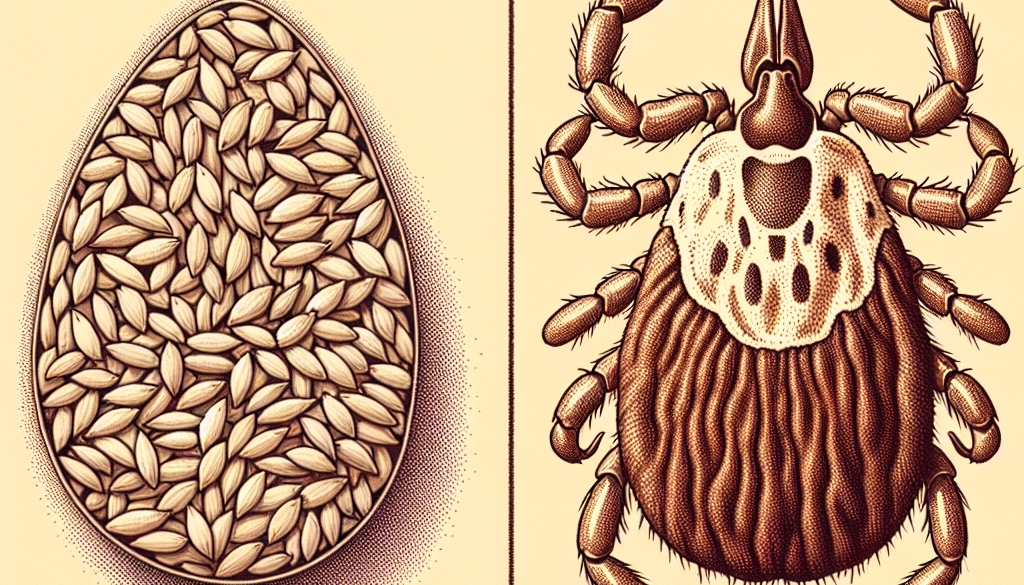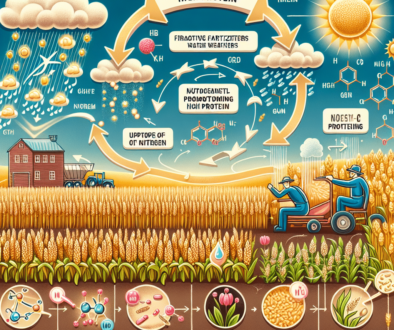Do Ticks Look Like Sesame Seeds?
-
Table of Contents
- Do Ticks Resemble Sesame Seeds? Understanding Tick Appearance and Risks
- Visual Comparison: Ticks vs. Sesame Seeds
- The Importance of Tick Identification
- Tick Species and Their Resemblance to Sesame Seeds
- Tick Behavior and Habitats
- Prevention and Protection Strategies
- Conclusion: The Sesame Seed Comparison and Tick Awareness
- Recommended Protein Products from ETprotein
Do Ticks Resemble Sesame Seeds? Understanding Tick Appearance and Risks

When it comes to identifying ticks, understanding their appearance is crucial for early detection and prevention of tick-borne diseases. One common question is whether ticks look like sesame seeds. This article will delve into the similarities and differences between ticks and sesame seeds, the importance of tick identification, and how to protect yourself from these potentially dangerous arachnids.
Visual Comparison: Ticks vs. Sesame Seeds
At first glance, ticks can indeed resemble sesame seeds. This comparison is particularly true for certain life stages of ticks and specific species. Here are some key points to consider:
- Size: Unfed ticks, especially in their nymph and adult stages, can be similar in size to a sesame seed, which is approximately 3 to 4 mm in length.
- Shape: Ticks are generally oval-shaped, which can be comparable to the oblong shape of a sesame seed.
- Color: The color of ticks can vary from reddish-brown to black, which might resemble the color of some sesame seeds, especially the black variety.
However, there are distinct differences that can help distinguish ticks from sesame seeds:
- Legs: Ticks have eight legs, which can sometimes be seen with the naked eye or a magnifying glass, while sesame seeds have no legs.
- Movement: Ticks can move, albeit slowly, while sesame seeds are inanimate.
- Texture: Ticks have a hard, shield-like structure called a scutum, which is not present in sesame seeds.
The Importance of Tick Identification
Correctly identifying ticks is essential for several reasons:
- Disease Prevention: Ticks are vectors for various diseases, such as Lyme disease, Rocky Mountain spotted fever, and anaplasmosis. Early detection and removal of ticks can reduce the risk of transmission.
- Pet Health: Pets are also susceptible to tick-borne diseases. Recognizing ticks on your pets can help keep them healthy and prevent the spread of ticks within your home.
- Environmental Awareness: Knowing what ticks look like can help you assess the risk in your surroundings, especially if you live in or visit areas with high tick populations.
Tick Species and Their Resemblance to Sesame Seeds
There are several species of ticks, and some may bear a closer resemblance to sesame seeds than others. For example:
- Blacklegged Tick (Ixodes scapularis): Also known as the deer tick, this species is notorious for transmitting Lyme disease. Nymphs and adults can be mistaken for sesame seeds due to their size and color.
- American Dog Tick (Dermacentor variabilis): These ticks are larger and may not be as easily confused with sesame seeds, but their engorged state can still be similar in size.
- Lone Star Tick (Amblyomma americanum): Named for the single white spot on the female’s back, these ticks can also be similar in size to sesame seeds when unfed.
Tick Behavior and Habitats
Understanding tick behavior and habitats is crucial for prevention:
- Questing: Ticks engage in a behavior called questing, where they climb onto vegetation and wait for a host to pass by. This is when they can be picked up by humans or animals.
- Habitats: Ticks prefer wooded, brushy, or grassy areas. They are commonly found in forests, meadows, and even urban parks with dense vegetation.
Prevention and Protection Strategies
To protect yourself from ticks:
- Use Repellents: Apply insect repellents that contain DEET, picaridin, or permethrin to clothing and exposed skin.
- Dress Appropriately: Wear long sleeves, long pants, and closed-toe shoes when in tick-prone areas. Tuck your pants into your socks for added protection.
- Perform Tick Checks: After spending time outdoors, thoroughly check your body, clothing, and pets for ticks.
- Maintain Your Yard: Keep grass cut short and remove leaf litter to reduce tick habitats near your home.
Conclusion: The Sesame Seed Comparison and Tick Awareness
In conclusion, while ticks can sometimes look like sesame seeds, especially when unfed, there are clear differences that can help you identify them. Being aware of these differences, along with understanding tick behavior and habitats, is vital for preventing tick bites and the diseases they may carry. By implementing prevention and protection strategies, you can reduce your risk of encountering ticks and maintain your health and well-being.
Recommended Protein Products from ETprotein
If you’re looking for high-quality protein products, consider ETprotein’s offerings. Their range of organic bulk vegan proteins, including rice, pea, and various seed proteins, are non-GMO, allergen-free, and feature a neutral taste. ETprotein also supplies L-(+)-Ergothioneine in various grades suitable for nutraceutical, pharmaceutical, and cosmetic applications. Whether you’re a distributor, trader, or manufacturer, ETprotein can meet your protein needs with their extensive product range.
About ETprotein:
ETprotein, a reputable protein and L-(+)-Ergothioneine (EGT) Chinese factory manufacturer and supplier, is renowned for producing, stocking, exporting, and delivering the highest quality organic bulk vegan proteins and L-(+)-Ergothioneine. They include Organic rice protein, clear rice protein, pea protein, clear pea protein, watermelon seed protein, pumpkin seed protein, sunflower seed protein, mung bean protein, peanut protein, and L-(+)-Ergothioneine EGT Pharmaceutical grade, L-(+)-Ergothioneine EGT food grade, L-(+)-Ergothioneine EGT cosmetic grade, L-(+)-Ergothioneine EGT reference grade and L-(+)-Ergothioneine EGT standard. Their offerings, characterized by a neutral taste, non-GMO, allergen-free attributes, with L-(+)-Ergothioneine purity over 98%, 99%, cater to a diverse range of industries. They serve nutraceutical, pharmaceutical, cosmeceutical, veterinary, as well as food and beverage finished product distributors, traders, and manufacturers across Europe, USA, Canada, Australia, Thailand, Japan, Korea, Brazil, and Chile, among others.
ETprotein specialization includes exporting and delivering tailor-made protein powder and finished nutritional supplements. Their extensive product range covers sectors like Food and Beverage, Sports Nutrition, Weight Management, Dietary Supplements, Health and Wellness Products, and Infant Formula, ensuring comprehensive solutions to meet all your protein needs.
As a trusted company by leading global food and beverage brands and Fortune 500 companies, ETprotein reinforces China’s reputation in the global arena. For more information or to sample their products, please contact them and email sales(at)ETprotein.com today.












